Paleoclimates
Paleoclimates
Understanding Climate Change Past and Present
Thomas M. Cronin
GEORGETOWN UNIVERSITY
COLUMBIA UNIVERSITY PRESS  NEW YORK
NEW YORK
Columbia University Press
Publishers Since 1893
New York Chichester, West Sussex
cup.columbia.edu
Copyright 2010 Columbia University Press
All rights reserved
E-ISBN 978-0-231-51636-5
Library of Congress Cataloging-in-Publication Data
Cronin, Thomas M.
Paleoclimates : understanding climate change past and present/Thomas M. Cronin.
p. cm.
Includes bibliographical references and index.
ISBN 978-0-231-14494-0 (cloth : alk. paper)ISBN 978-0-231-51636-5 (ebook) 1. Paleoclimatology. I. Title.
QC884.C739 2009
551.60901dc22 2009019740
A Columbia University Press E-book.
CUP would be pleased to hear about your reading experience with this e-book at .
References to Internet Web sites (URLs) were accurate at the time of writing. Neither the author nor Columbia University Press is responsible for URLs that may have expired or changed since the manuscript was prepared.
Contents
Causes of Climate Change
Phanerozoic Paleogeography
Jurassic and Cretaceous Ocean Anoxic Events
Ocean Drilling Program Legs and Cenozoic Paleoclimatology
Completed and Ongoing Cenozoic Continental Paleoclimate Coring Projects
Pre-Quaternary Orbital-Scale Climate Variability
Orbital Theory and Mechanisms
Event Stratigraphy and Terminology of Glacial Millennial Climate Events
Cosmogenic Nuclides
Heinrich Events
Event Stratigraphy and Terminology of the LGM and Last Deglaciation
Onset of Post-LGM Warming and Deglaciation
Glacial and Holocene Green house Gas Concentrations
Holocene Paleoclimate Terminology
Solar Cycles
Holocene Atmospheric and Oceanic Records
Selected Holocene Records Possibly Related to Solar Cycles
Ice-Dammed Lakes and Discharge Events Linked to Abrupt Climate Changes
Internal Modes of Climate Variability
Paleo-Indices of Internal Modes of Variability
Observed Rates and Sources of Sea-Level Rise
Rates of Relative Sea-Level Rise During the Past Millennium
Climate change is a concern for everyone. Such is the case for the public at large, policy makers, and research scientists in climatology as well as in fields as diverse as meteorology, oceanography, astronomy, chemistry, geochemistry, computer modeling, and biology, among many other disciplines. Climate science is truly an integrated field in which research efforts are made to understand the modern and future climate system and the impact of climate on a variety of social systems.
As a soft-rock geologist by training, I have, not surprisingly, taken a geological view of climate change in writing this book. Geological evidence about climatethat is, evidence deduced from any natural archive, including glacial ice, tree rings, speleothems, and other nonrock systemsrests on the foundations build by generations of field geologists, stratigraphers, geochemists, micropaleontologists, and geophysicists who, just like climatologists, physical oceanographers, and astronomers, operate according to principles that guide their respective fields.
Paleoclimatology is inherently a retrospective and interpretive field built on an extensive empirical database of measurements obtained from physical, geochemical, paleontological, and other sources called proxies that are compiled into paleoclimate reconstructions. Proxies are the bread-and-butter empirical sources of data for paleoclimatology, similar to the satellite observations or buoys that provide the observational framework for atmospheric scientists and oceanographers.
In addition to relying on empirical observations, like any other natural science, paleoclimatology is hypothesis driven. An abundance of climate hypotheses, some sufficiently mature to be called theories, are available to paleoclimatologists, who go to great pains to test them. Deep-sea coring expeditions and multiyear ice-sheet coring programs are not carried out randomly. Each project is planned, often years in advance, to test one or several major theories about the earths climate. Much of the content of this book is derived from these large-scale programs as well as the efforts of individual scientists.
One theme in this book is the pluralism of causal mechanisms in climate change. Take the example of efforts today to distill modern atmospheric and ocean warming into those portions of temperature change that have been caused by green house gas, volcanic, solar, and aerosol forcingthat is, to detect and attribute causality to modern temperature patterns. Such a view, admirable and fruitful as it has been, seems simplified given the complexity of the system, the unknowns about natural variability and feedback processes, and the scale of the green house gas perturbation now with us. This book takes a much wider view of climate change than that reflected in recent temperature trends.
Geological archives of past climate incorporate not only the effects of forcing from solar variability and green house gases, but also multiple feedback mechanisms that of en produce spectacularly unusual climate states, cyclic environmental variations, and massive impacts on ecosystems. As valuable as it is to understand modern processes, like many of my contemporaries, I threw uniformitarianism aside long ago and adhere to the view that the past tells us as much as or more about the present and future as the other way around. In this sense, modern climate trends in temperature, rainfall ice sheets, and sea ice do not seem so unusual to many of us, for we have the perspective of time unavailable to others.
This book is a hybrid, neither a standard textbook nor a comprehensive review of the literature, but rather an effort to summarize the state of the art of paleoclimatology specifically as it pertains to contemporary issues in climate science in general. Introductory material on the climate system and paleoclimate methods and principles given in the first two chapters is of necessity brief, meant to introduce the reader to terms and concepts discussed in later chapters, but not to be taken in lieu of formal, quantitative study of these fields. As such, sections may be too elementary for experts in specific fields, and some readers may wish to proceed directly to chapters on climate changes over a particular timescale, or changes caused by specific climate-forcing mechanisms. Although many common themes run throughout paleoclimatology, each chapter can be read in de pen dent of the others and in any order.
Several colleagues have told me I might be a little crazy to undertake such an ambitious effort, so when I started a few years ago I was well aware that a book covering 4 billion years of earth-climate history was bound to contain imbalances, shortcomings, and gaps. It is worth emphasizing, then, that this book is merely an entre into an immense, exponentially growing field that is certain to experience major advances in the next few decades. With that said, I hope at least to instill an appreciation for the contributions of paleoclimatologists to climate science and for one of the major environmental issues of our time.
This book grew out of my oceans course at Georgetown University. Sincere thanks go to Tim Beach and Chuck Weiss of Georgetown Universitys Edmund A. Walsh School of Foreign Service (SFS) for their liberal views on what future diplomats and professionals in the Science, Technology and International Affairs program ought to be learning and for giving me a chance to teach them. Georgetowns SFS has come a long way since my father attended the program after returning from the U.S. Marines after World War II, and hopefully climate-ocean topics will continue to attract the best nonscience students, as well as those in the natural sciences.


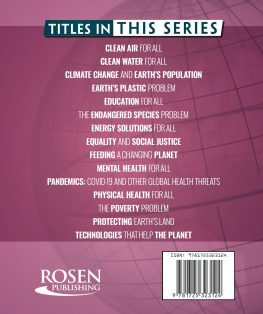

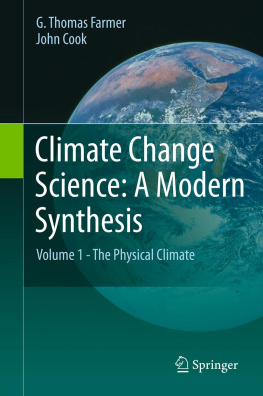
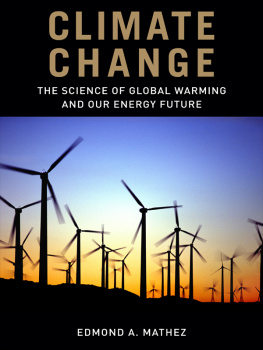
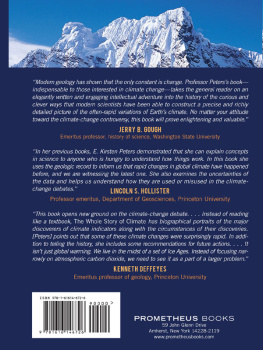
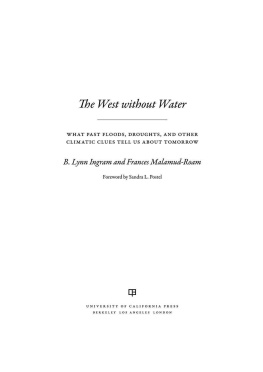
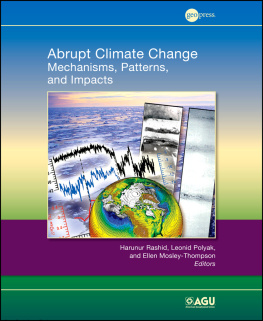
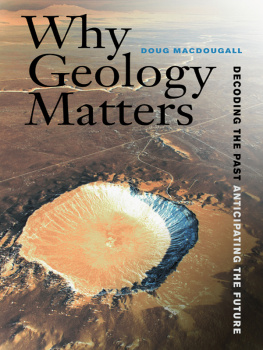
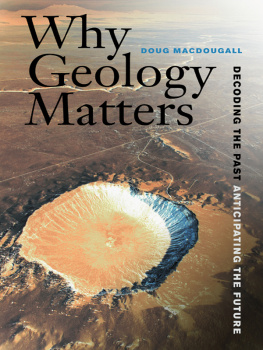

 NEW YORK
NEW YORK